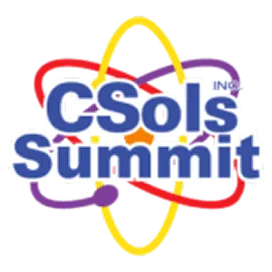So you have decided that your organization really needs a LIMS and you have convinced your department head that this is the case. However, in order to proceed, you need to secure funding for the LIMS which can be quite pricey depending on your needs and the number of users. Your management has asked you to justify the purchase of the LIMS, but where do you start? The justification of a LIMS is generally derived from two main categories of measures: Quantitative and Qualitative, the two Q's. The quantitative measures are the clearest to determine. They will provide direct monetary justification and measurable Return on Investment (ROI) figures. The qualitative factors should not be ignored since these can be equally as compelling for your LIMS justification and have been known to tip the balance during an appropriation process.
Developing the Justification
Quantitative Justification
Let's start with the Quantitative category. These are derived from time savings (i.e. efficiency gains) and hence cost savings that can be realized through the implementation and utilization of a LIMS. When you are documenting these factors, look for bottlenecks and repetitive tasks in your laboratory workflow that can be alleviated through LIMS automation. Some of the classic areas to analyze include:
- Report generation
- Sample and test status updates
- Work assignment and load leveling
- Locating samples and results
- Calculations
- Manual results entry
- Entry of information into other systems (i.e. ERP, MES, Accounting, etc.)
- Results review and release
- Regulatory information availability
If you currently have a LIMS in place with all of your instruments and systems integrated, some of these may not apply. If this is your situation you will need to be more creative in your Quantitative analysis. Once you have determined how much time is spent on these tasks, estimate how much time it would take to do this if a LIMS and the associated interfaces (instruments and systems) were in place; this is often zero. Subtracting the two will yield your time savings which are then extrapolated for a full year. Take the yearly time savings and multiply it by the fully loaded costs (i.e. salary and benefits) of the resource generally performing the task and you will derive the yearly cost savings of having a LIMS in use within your operation. Also, be sure to include any production or manufacturing efficiencies or costs reduction (if applicable) and any reductions in time to market in your Quantitative justification category.
To develop your ROI you will need to develop the yearly costs of the LIMS including software and user licensing, software support, hardware, and personnel (system administrators, IT, etc.). I generally develop this for a 3 year period. Apply the yearly cost savings to the yearly costs of the LIMS and derive the ROI period. Most organizations target a 3 year or less ROI period for capital expenditures but check with your management for what your company is looking for. It is important while going through the Quantitative justification process that you make it clear that you are not seeking to reduce headcount in your operation but to alleviate the repetitive and mundane tasks so that your scientists and technicians can do what they are really supposed to do - pursue science.
Qualitative Justification
Developing your justifications in the Qualitative category is often murkier but I would encourage you not to neglect this category of justification. Even though a hard cost savings number cannot be derived for these items, they are still valuable and often end up being the deciding factors in gaining your project approval. Some prime examples of Qualitative justifications include:
- Increased availability of information
- Increased Innovation
- Increased Collaboration
- Scientific Effectiveness
Combine your Quantitative, Qualitative justifications and your ROI calculation into your capital appropriation request and you will shortly be developing your requirements so you can start your LIMS Selection. If this seems like too much for you to do on your own, never fear. There are informatics consulting organizations that can help. When selecting a consulting organization to assist you is justifying your LIMS you should ensure that they are:
- Experts in LIMS, laboratory work processes, and laboratory data and information flow (get references!)
- Domain experts (i.e. your industry and your type of lab)
- IT experts
- Regulatory experts (if your lab is in a regulated environment)
- LIMS vendor-neutral
- - - - - - - - - - - - - - - - - - - - - - - - - - - - - - - - - - - - - - - - - - - -
Have you gone through the process of justifying a LIMS for your Lab? If so, did you use both Quantitative and Qualitative factors and what was your ROI period? If you had to do it over again would you do anything differently?




Comments